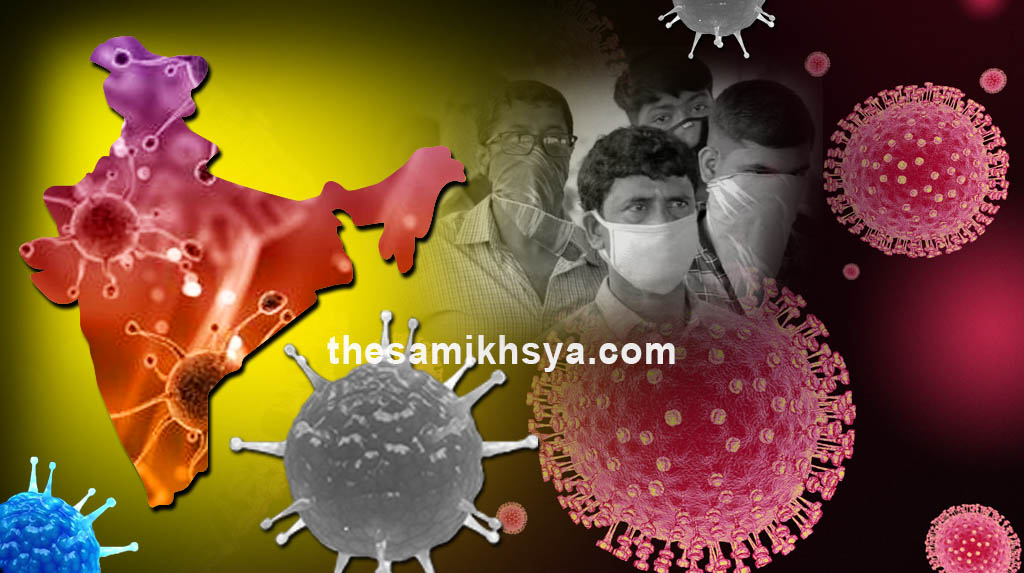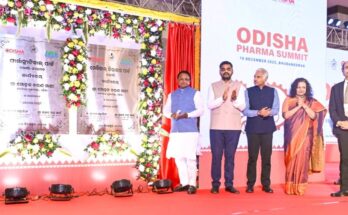In most nations, massive economic changes take place every 70-100 years, changing the nations totally. Sometimes these changes destroy the nations, or they take them to the top. The US had earlier phases of growth when they grew 7-10 times post civil war and American reforms including the ‘New Deal’ designed by President Franklin Delano Roosevelt. This was a series of reforms enacted between 1933 and 1939 that lifted the US out of the Great Depression and restored hope to the American people. It focused on the ‘three Rs’ of relief for the vulnerable, recovery of the economy, and reform of the financial system (familiar words during Covid crisis). The US again and the UK, the western world restructured themselves also during IR 1.0 and IR 2.0 and grew 5-6 times.
With the help of the US, China did a total restructuring during IR 3.0 and grew eight times. India could only grow 2.5 times. The growth rate depended on the efficiency of restructuring. All countries have now entered very disruptive periods of IR 4.0 and 5.0 requiring huge changes, and also hit by Covid, they require major changes in the administrative, financial and market systems, just to survive. And these changes could later be used for enormous growth. In normal times, our democracy may not have allowed these changes, hence the opportunity. (I have described the earlier changes in my book, Containing the China Onslaught).
We could not join the American market bloc in 1972, though we were shortlisted by US experts, due to Nixon’s strong prejudice against Indira Gandhi, she having convincingly won the Bangladesh war despite Nixon’s support to Pakistan. Perhaps, even if offered, we may not have joined due to our philosophical non-aligned stand, which was compromising our growth. All nations, including India, have to change now to survive Covid and this gives us an opportunity to collaborate with the best nations, practices and consultants particularly in the democratic world, keen to partner us against the tributary communist nation China, threatening everyone. The US supported China under the mistaken impression that it was helping itself against their Cold War enemy, Russia, but China emerged as its enemy/competitor. It might be in the interest of the US and other democracies to prop up India, to regain the ‘balance of power'(Kissinger’s term to define/justify the illogical China policy), particularly in the East.
In the words of David McCullough, a Pulitzer Prize winner: “All crises are also opportunities for radical reform, for re-aligning priorities, and for tweaking policies in pursuit of the greater common good.” History has shown that those who navigated in these perilous times better, gained at the expense of others. Mao failed in his new deal post 1950, but then took the unbelievable decision to go to the US for help, and this changed China. India also at the time of foreign exchange crisis in 1991, turned the crisis into an opportunity and launched reforms, but at a low speed and commitment, and lost out hugely to China.
No one expected that Covid, a six month phenomenon would change the world and India irreversibly. Post-Covid India will be very different and if it is planned well, both by the central government and state governments, it can be a huge opportunity. Covid has ensured that we make these changes for our survival, and give up business as usual. Let me look at the compulsions of some changes, and start with the changes forced by the biggest impact of huge migration of labour and employment crisis first.
Labour exporting states like Uttar Pradesh, Odisha, Bihar, Jharkhand, Chhattisgarh, Rajasthan etc have compulsively received large-scale semi to no skilled human capital in their states during the huge labor migration. This is also the time that digitization has hit the world and India. This is a great time to have a large scale reform and reorganizing the government departments, and reorganizing industry and other institutions, for long time results.
A large-scale migrant population earns less that Rs 500 daily in urban areas. Securing 80 per cent of this income in 100 km radius from their native place should be the primary effort, e.g. Uttar Pradesh should focus on large-scale infrastructure connectivity projects and building up new cities for better absorption of talent pool.
The pandemic has exposed fault lines in the global trade and financial architecture, disrupting our travel patterns, global manufacturing value-chains, and governance systems. The crisis brings home some potent lessons: individual health outcomes cannot be divorced from the health and hygiene systems of the community and that national borders are no defence against threats from nature, and that collective global action is increasingly a sine-qua-non for our own individual protection from such events. The hope remains that the Covid-19 crisis brings about a global epiphany regarding the need for saner responses to the other formidable(and less immediately visible) threat: the effects of climate change. Once this episode is behind us, if its only legacy is to bequeath us a wiser and more deliberative approach to balancing the often-conflicting objectives of economic progress and environment protection, then much good would have come of it. India has already taken leadership position in this effort.
Like other countries, India is also seeking to steer a judicious path between the need to insulate the population, and to revive the economic engine. The rigorous national lockdown has succeeded in slowing the spread of the virus, and the current thinking in the government is to open the country for business in a carefully calibrated manner, focusing on reviving sectors like agriculture (this sector should have received huge attention, but did not). The Covid crisis ensures that only this restructuring will prepare the base for our rehabilitaion, and then manufacturing, and services; while isolating geographic hotspots and vulnerable groups. The most compelling requirement for reviving the economy is to effectively manage the emergence from the lockdown, ensuring that supply chains are reopened, that manufacturing and service enterprises are free to operate, while ensuring basic health hygiene.
The first charge on the government is to protect the lives and entitlements of the most vulnerable people at the bottom of the pyramid — a daunting task, given that the unorganised sector represents over 90 per cent of the workforce. India has millions of migrant workers, who are in acute distress, bereft of income support or home comfort. The first round of relief has rightly been the package of Rs 1.7 trillion for the vulnerable, along with measures like reopening Mahatma Gandhi National Rural Employment Guarantee Act (MGNREGA) work. Much more needs to be done, and much more is expected, particularly a stimulus-cum-relief package that is imminent at the time of writing. There are demands and expectations that this package will be in the region of at least Rs 5-6 trillion, around 3 per cent of the country’s GDP. This package could encompass fiscal stimulus, liquidity in the system, tax deferral, credit-protection, and business-continuity and sustenance assistance for small enterprises. The agriculture sector, which constitutes around 15 per cent of the GDP, but more than 50 per cent population needs immediate relief, in terms of facilitating market access for the current rabi crop under harvesting, as well as funding support for farmers to commit to the imminent kharif crop, come June.
Apart from agriculture, sectoral stimulus packages and prioritisation of relief and rehabilitation measures are warranted, given the substantial damages inflicted on sectors like tourism, hospitality, transportation, which have very large employment absorption levels.
Another area of focus needs to be infrastructure, not just for creating assets for the future, but also for absorbing employment in sectors like construction. The government’s recently announced National Infrastructure Pipeline of around Rs 100 trillion, could be re-prioritised by frontloading projects that soak up relatively greater levels of employment.
Two perfect storms — the pandemic and geopolitical disruptions: We also need to think beyond measures to mitigate the impact of the crisis, and around opportunities that may arise for India from global disruptions. Much of India’s economic reform of the early 90s was forced on us on the back of a public-finance crisis, and we also need to think beyond crisis management now, about how we can further refine our economic policies and modernise our infrastructure, particularly around logistics, for fostering more inward investment. The convergence of two perfect storms — the pandemic and the geopolitics-driven disruptions recently seen in global trade and investment flows — maybe India’s opportunity to become one of the key nodes of the global value chain. We need to set up two national missions, with the same zeal and focus that went into improving India’s ease-of-doing business rankings; one around reducing process friction for inward investment, and another for improving the ease of undertaking trans-national trade.
We all tend to put our differences aside and come together when faced with an external challenge, and that is presumably the most important element for emerging stronger and better, a pan-national coming together around common goals: alleviating distress, protecting the population, and creating better futures for every Indian. Supply chains, demand centers, and labour corridors would need to be restored while the country ensures that lockdowns are sharply targeted in the locations and for the activities required to contain the virus. The following examples highlight a few of the dependencies across Indian sectors and geographies:
* In the textiles sector, cotton is bought in the western parts of India, yarn is spun in the north and west, weaving takes place in the south, and apparel is manufactured in clusters in the north and south.
* In the chemical industry, the acetic-acid value-chain supplies diverse industries, such as pharmaceuticals, pesticides, paper, food processing, and construction. Any blockage to its supply chain would therefore have ripple effects in many other seemingly unrelated sectors.
* Electronics manufacturing requires inputs from sectors as diverse as metal working, plastic molding, paper processing, chemical processing, and electrical supplies. Disallowing activity in any of them would affect electronics-manufacturing output.
* Six states (including Andhra Pradesh, Kerala, Maharashtra, and Tamil Nadu, which account for 30 per cent of construction activity) rely heavily on migrant construction workers from other states. Bottlenecks in the return of migrants would affect building activity in such states.
* Half of all drivers engaged in freight movement across the country come from just 14 districts, according to an analysis. Restrictions on the movement of people from these districts could affect the ramping up of national logistics activity.
Skilling of population: Large-scale job loss gives an opportunity to the government to re-skill the population for better jobs. Government should prepare a plan to re-skill the semi-skilled workforce at nominal fee. This will not only reorganize the human capital for future needs but absorb the shock generated through the job loss. The proportion of formally skilled workers in India is extremely low, at 4.69 per cent of total workforce, compared to 24 per cent in China, 52 per cent in the US, 68 per cent in the UK, 75 per cent in Germany, 80 per cent in Japan and 96 per cent in South Korea.
According to the latest India Skill Report (2019), only 45.6 per cent of the youth graduating from educational institutions are employable. To address this mismatch, it is imperative to understand the ‘return on skill’ (ROS) concept.
Copying the success of TVE model in China: One major reform mechanism utilized early on were the Township and Village Enterprises (TVEs) which were market-oriented public enterprises under the purview of local governments based in townships and villages in the People’s Republic of China. It is important to remember that TVE refers to companies located in townships and villages, not owned by township and villages. This allows us to work under the framework of consumption and intrinsic motivations driving early growth (privatization), and contributes to why the TVEs were successful in China during the 1980s. TVEs have been hailed as one of the wonders of the reforms by Chinese and foreigners alike. Their initial success came at a pivotal opportunity where farmers’ incomes by the mid 1980s began to stagnate, and the best solution to increase income was to stimulate non-grain and non-agricultural production. In 1978 TVEs employed amount 28 million people, but between 1984 and 1997 they created nearly 100 million non-farm jobs. Local governments tended to and fostered the developments of these TVEs for they saw these entities as regular sources of revenues in resource-constrained environments. The TVE reforms also allowed for labour forces in the rural areas to more efficiently engage in industrial outputs rather than agricultural outputs.
Even Deng noted the unexpected results: “What took us by complete surprise was the development of TVEs… All sorts of small enterprises boomed in the countryside, as if a strong army appeared suddenly from nowhere.” The results seem quite clear for it fuels individual incentives; the decision to relax the state purchasing monopoly on agricultural goods (a hallmark of Mao’s failed policies) to make them available to local rural industry allowed for the efficient usage of excess rural labour, processed agricultural products, and diversified production of a range of consumer goods and products for export. Statistically, the results are justified as the growth rate was exponential in its explosives, with rural industrial output growing at 21 per cent per annum from 1978 through the early 1990s.
I am no expert in the sectors I have dealt with. I have only given a recommended a direction the country will have to work. It is gratifying to see that lot of work has been done, but we have to go further with the help of experts.




